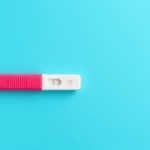Understanding Implantation Bleeding and Its Smell
We will be discussing how implantation bleeding smell is different than menstrual period bleeding. To begin, implantation bleeding is a light spotting that occurs when a fertilized egg attaches to the lining of the uterus, often around 6 to 12 days after conception. Many women may confuse this with their menstrual cycle. However, there are key distinctions regarding the bleeding, including the quality of the blood and its odorous characteristics.
The occurrence of implantation bleeding is typically light, pink or brown in color, compared to the bright red of a period. Notably, the smell of implantation bleeding is often less pronounced than that of a menstrual period. A combination of hormonal changes and the nature of the blood itself may influence this difference. Recognizing these distinctions is critical for women trying to conceive or those monitoring their reproductive health.
What Causes Implantation Bleeding?
Understanding the underlying causes of implantation bleeding helps women discern its characteristics. When a sperm fertilizes an egg, the journey begins with the embryo’s attachment to the uterine wall. This process can lead to minor bleeding as blood vessels break, accounting for the spotting seen in implantation bleeding. Unlike menstruation, which involves shedding of the uterine lining, implantation bleeding is a sign of a developing pregnancy.
This bleeding may vary from woman to woman. Some experience just a tint of color, while others may have slight spotting. The blood during this phase lacks the strong odor often associated with menstruation. Factors like vaginal pH and the blood’s age can impact smell; fresh blood is less odorous than older, stagnant blood.
As a result, women who understand their cycles may identify implantation bleeding based on the subtle differences in both appearance and smell.
Characteristics of Implantation Bleeding
Implantation bleeding has distinct characteristics that set it apart from a regular menstrual period. Key physical attributes include:
- Color: Typically pink or brown, indicating older blood.
- Volume: Generally light and sporadic, as opposed to a menstrual flow.
- Odor: May have a faint, less metallic smell than menstrual blood.
This combination makes spotting due to implantation quite unique. The low volume and color may lead women to mistake it for the start of their period, but the absence of the typical odor can serve as a differentiator. It is vital for women to monitor their cycles and any irregularities that may present, such as differing odors. Understanding these signs can aid in early detection of pregnancy.
Comparing Smells: Implantation Bleeding Versus Menstrual Blood
The smell of blood during implantation and menstruation differs considerably. Menstrual blood typically carries a stronger odor due to its composition, which includes tissue and the lining of the uterus being expelled. These components can lead to the distinct metallic scent many women recognize during their periods.
In contrast, the smell associated with implantation bleeding is often minimal or barely noticeable. This reduction in odor is primarily due to the absence of the uterine tissue that is commonly found in menstrual blood. Women may notice that the light spotting of implantation bleeding lacks the pungency often associated with menstruation.
The differences in smell can indeed be a useful factor for women to consider when trying to understand their reproductive health status. Awareness of these factors becomes increasingly important, especially for women actively trying to conceive.
Implantation Bleeding and Hormonal Changes
The hormonal fluctuations in the body during a woman’s cycle play a crucial role in both menstruation and implantation bleeding. Early pregnancy is characterized by increased levels of hormones such as estrogen and progesterone. These hormones influence the uterine lining, preparing it for the potential embryo.
As a result, the environment in which implantation occurs differs significantly from that of regular menstrual cycles. The hormonal changes inhibit the production of prostaglandins, which are primarily responsible for the strong odor associated with menstrual blood. This alteration can lead to lighter and less odorous bleeding when implantation occurs.
For women trying to conceive, paying attention to these hormonal changes alongside any bleeding, whether implantation or menstrual, can assist them in understanding their cycle more effectively. Spotting that smells significantly different might indicate implantation, signaling a successful fertilization.
When to Seek Medical Attention
Understanding the signs of implantation bleeding is essential, but it is equally important to know when to seek medical advice. While light spotting can be entirely normal, there are circumstances in which it is advisable to consult a healthcare provider.
- Heavy bleeding: If the spotting turns to a heavier flow, this could be indicative of another issue.
- Severe cramping: Intense pain accompanied by bleeding may signal a miscarriage or ectopic pregnancy.
- The duration of bleeding: If bleeding persists beyond a couple of days, it may warrant investigation.
A healthcare professional can offer guidance and run tests if necessary, aiding in detecting any underlying conditions that could affect reproductive health. Recognizing that not all bleeding during a cycle is normal can empower women to advocate for their health.
Understanding Implantation Patterns and Their Odor
Implantation bleeding follows a general pattern and can differ from case to case. Spotting typically occurs around a week to two weeks after conception, signifying attachment to the uterine wall. Recognizing personal patterns becomes critical for those tracking their fertility cycles.
Most women will experience this temporary light bleeding without strong odors. The unique smell (or lack thereof) results from factors like the composition of the blood, age, and individual body chemistry. For many women, consistent tracking of their cycles can help them identify these variations, as recognizing such trends is key to understanding one’s reproductive health.
By paying attention to these bodily signs, women can become their own health advocates, drawing correlations between different cycles. Whether regarding smell, color, or quantity, awareness leads to better understanding and management of reproductive health.
Final Thoughts
Recognizing the distinctions between implantation bleeding and a normal period involves understanding their characteristics, including smell. Women should be aware that implantation bleeding generally appears lighter in color and odor compared to menstrual bleeding. Understanding these nuances can be crucial for those attempting to conceive, as identifying signs of implantation may point towards successful fertilization.
The various factors influencing the smell of blood during implantation and menstruation mainly stem from hormonal changes occurring in the body. Seeking medical advice when experiencing unusual bleeding is vital for overall health and wellness. Knowledge is empowering, allowing women to take control of their reproductive health.
Being observant and informed about personal cycles can ultimately bring clarity to reproductive health, highlighting the significant difference between implantation bleeding and menstruation.
As with any health-related topic, it is crucial to engage openly with healthcare professionals about any concerns regarding unusual bleeding and its characteristics.
Frequently Asked Questions
- How long does implantation bleeding last?
Typically, implantation bleeding lasts from a few hours to three days. It is generally short-lived, whereas a menstrual period can last in the range of three to seven days. - Can implantation bleeding be mistaken for a light period?
Yes, the light spotting associated with implantation can be confused for a light period, especially in women with irregular cycles. - Is it possible for implantation bleeding to smell?
Implantation bleeding may have a faint odor but is usually less pronounced compared to a menstrual period. - When should I take a pregnancy test following implantation bleeding?
It is typically recommended to wait a few days to a week after the bleeding occurs for more accurate results on a pregnancy test. - Should I be concerned about implantation bleeding?
If the bleeding is very light and brief, it is usually not a cause for concern. However, heavy bleeding or accompanying severe cramps should prompt a medical consultation.
Further Reading
What Type of Psychotherapy Is Best for Anxiety?







